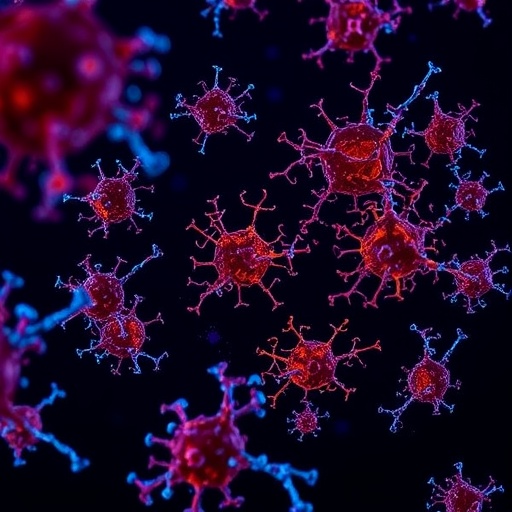The implementation of harm reduction strategies in public health continues to be a pivotal area of research, particularly as societies grapple with the complexities surrounding cannabis use among youth. A recent study titled “Implementation and evaluation of a knowledge translation process to optimize the adoption of harm reduction in cannabis use by practitioners working with youth in Quebec: a mixed-methods study,” sheds light on the practical measures necessary for effective knowledge dissemination in this domain. With findings poised to shift perspectives on cannabis use, the research presented by Haddad et al. underlines the urgency of equipping practitioners with the appropriate tools to foster responsible usage among adolescents.
Understanding the nuances of cannabis consumption among youth requires a broad lens that encompasses social, psychological, and health factors. Cannabis, once stigmatized and illegal in many jurisdictions, is slowly being legitimized, especially as more regions opt for legalization frameworks. Nevertheless, the implications of such decisions can significantly affect youth, resulting in a need for robust strategies that mitigate potential risks. Therefore, practitioners need effective methods to both educate themselves and inform the younger population on responsible usage and the dangers inherent in recreational cannabis consumption.
This mixed-methods study employed both qualitative and quantitative approaches to explore the intricacies of knowledge translation in the context of harm reduction. The researchers aimed to bridge the gap between theoretical knowledge about harm reduction and its practical application among healthcare providers working with adolescents. It is essential for practitioners not only to understand harm reduction principles but to implement them effectively in their everyday practices, ensuring they are well equipped to handle potential substance use issues among the youth demographic.
One of the core aspects of the study was the identification of existing knowledge gaps among practitioners regarding cannabis harm reduction. Despite the increasing prevalence of cannabis in society, there appears to be a collective hesitance to discuss it openly, particularly within healthcare settings. This inconsistency can lead to a lack of social responsibility in communication about the risks and benefits of cannabis use, subsequently affecting the decisions made by youth. The study’s authors contend that an effective knowledge translation process can foster a culture where open discussions about cannabis can thrive, thereby enabling practitioners to guide youth in making informed decisions.
The study also examined the importance of tailored training programs designed to cater specifically to practitioners who engage with youth. Such programs should not only convey information about the health impacts of cannabis but also emphasize building skills that allow healthcare providers to effectively communicate with their young clients. By providing a comfortable platform for discussion, practitioners can empower youth to voice their concerns and questions, ensuring that necessary information on reducing harms associated with cannabis use reaches them.
Importantly, the study highlighted the role of community engagement in the successful deployment of knowledge translation processes. By involving local communities and stakeholders in the design and implementation of educational initiatives, the project secured a more significant impact. Engaging community leaders and organizations promotes a sense of ownership and fosters collaboration, which is crucial in addressing public health challenges such as substance use among youth. The intersection of community input and professional knowledge serves as a recipe for effective harm reduction strategies.
Moreover, to facilitate these initiatives, the researchers underscored the necessity of assessing the tools and resources available for practitioners. One of the significant barriers identified was the void of user-friendly materials and digital resources that are grounded in evidence-based practices. With the rapid advancement in technology and the digitalization of health resources, practitioners must have access to up-to-date, easily navigable tools that can assist in the effective implementation of harm reduction practices.
As the research progressed, it became clear that ongoing evaluation of training programs is essential to ensuring their effectiveness. Building a cycle of feedback that incorporates the perspectives of practitioners who undergo these training sessions allows for continuous improvement. The study employed various evaluation methodologies, emphasizing the need for real-time feedback which can help in making immediate adjustments and assuring that the information disseminated remains relevant and applicable in an ever-evolving landscape of cannabis use. By establishing this feedback loop, it can gradually lead to improved outcomes in how harm reduction is integrated into youths’ healthcare plans.
The mixed-methods approach utilized in this research allowed for a comprehensive understanding of participants’ experiences and perceptions regarding the adoption of these harm reduction practices. By combining both qualitative interviews with quantitative surveys, the authors were able to create a rich tapestry of data that painted a clearer picture of the landscape of cannabis use among youth. Exploring practitioners’ insights uncovered not just barriers but also opportunities for enhancing existing knowledge translation processes.
This research is timely considering the accelerating pace of cannabis legalization across various jurisdictions. As young users find themselves navigating an increasingly permissive cannabis environment, it becomes crucial for practitioners to stay ahead of the curve. Educating them about the potential benefits of harm reduction strategies can significantly equip them to aid youth in making informed choices that prioritize their health and safety.
In summary, the study by Haddad et al. serves as a critical reminder of the need for adaptable frameworks in implementing public health strategies surrounding cannabis use. By prioritizing knowledge translation and addressing existing barriers faced by practitioners, we can create a more educated and resilient fabric of young users who can engage responsibly with cannabis. Such actions are not just beneficial for individual health, but they also contribute to broader social wellness, setting a precedent for how society tackles emerging public health issues.
The implications of this research are set to be far-reaching, particularly as more healthcare practitioners integrate these insights into their approaches with youth. By centralizing harm reduction strategies in cannabis-related healthcare practices, practitioners can cultivate environments that support healthy discussions, provide empathetic care, and promote responsible use of cannabis among young populations.
Subject of Research: Knowledge translation in harm reduction strategies regarding cannabis use among youth.
Article Title: Implementation and evaluation of a knowledge translation process to optimize the adoption of harm reduction in cannabis use by practitioners working with youth in Quebec: a mixed-methods study.
Article References:
Haddad, R., Fallu, JS., Huỳnh, C. et al. Implementation and evaluation of a knowledge translation process to optimize the adoption of harm reduction in cannabis use by practitioners working with youth in Quebec: a mixed-methods study.
Health Res Policy Sys 23, 147 (2025). https://doi.org/10.1186/s12961-025-01411-y
Image Credits: AI Generated
DOI:
Keywords: Cannabis, harm reduction, youth, knowledge translation, public health, healthcare practitioners.
Tags: adolescent cannabis consumption educationeffective knowledge dissemination in public healthharm reduction strategies for youth cannabis useimplications of cannabis legalization for youthmitigating risks of recreational cannabis usemixed methods research in public healthoptimizing harm reduction practices in Quebecpractitioners’ tools for cannabis educationQuebec cannabis policy and youthresponsible cannabis usage among adolescentssocial and psychological factors of cannabis useyouth-focused health interventions for cannabis





